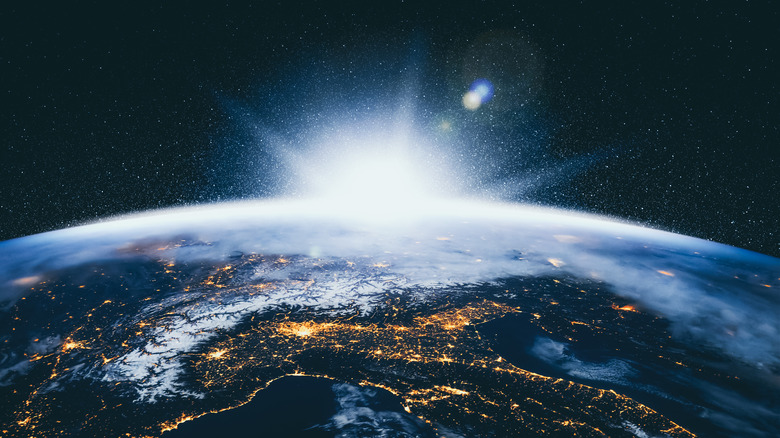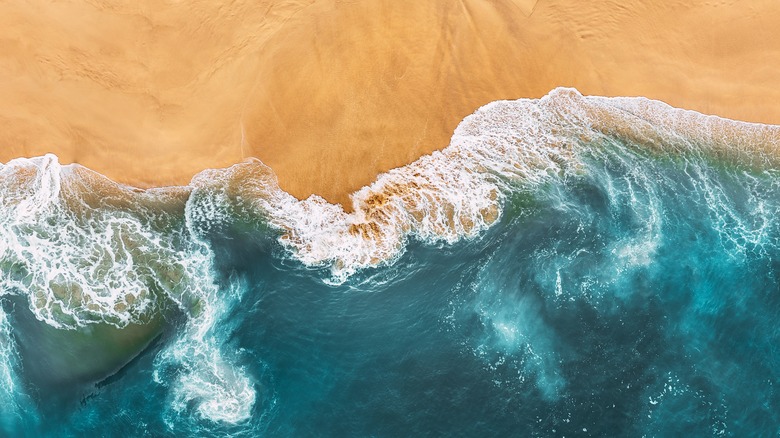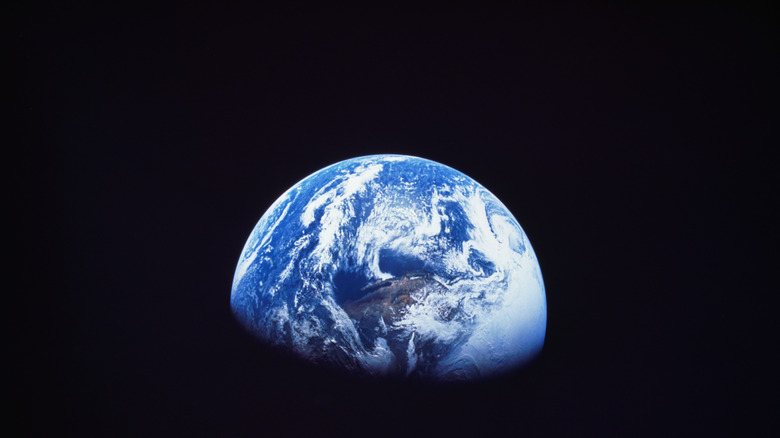Here's What Would Happen If The Earth Started To Spin Faster
The average passenger plane flies at around 550-575 miles per hour (per Epic Flight Academy). One of the fastest jets in the world, the Lockheed SR-71 Blackbird, reaches top speeds of 2,100 miles per hour (via Google). The NASA/USAF X-15, or North American X-15, is the fastest manned jet in the world at around 4,520 piles per hour (per Fly Jet Fly).
Does it come as a surprise that, by comparison, the Earth itself spins only half or a quarter as fast as the world's fastest jets? According to Scientific American, the surface of our planet, at the equator, is spinning at just 1,000 miles per hour. However, earlier this year, the Earth sped up — only incredibly slightly, but enough to shorten our 24-hour day on June 29 by 1.59 milliseconds (via Forbes).
Why is a couple of milliseconds worth any fuss? A Popular Science report says that even a one-mile-per-hour increase in the Earth's rotation speed would lead to tangible impacts across the planet. In an interview with Popular Science, geographic information systems analyst Witold Fraczek said that even this slight acceleration would throw off satellite communications and TV broadcasting and raise the sea level at the equator by several inches as water is drawn down from the poles.
Floods abound at double the speed
With just one mph shaved off the Earth's rotation, our days would only get shorter by about 90 seconds — nothing that would impact circadian rhythms. But if we suddenly jumped to a 100-mile-per-hour faster spin, it would shorten the day to 22 hours, likely interrupting the natural clocks of humans, animals, and plants.
At that speed, we could kiss northern Australia, the Amazon Basin, and many islands near the equator goodbye, Fraczek told Popular Science. In those regions, the ocean could swell up to 65 feet above land level as water from northern and southern seas and oceans is pulled to the Earth's middle.
Let's crank the Earth's spin up to 2,000 miles per hour — we've now doubled our planet's natural speed. The entire equatorial region has been swallowed except for the highest peaks, like Kilimanjaro and the Andes summits. Levels in the Arctic Ocean would plummet and the equator would see constant clouds and rain, with less gravitational force to hold down water.
17x the speed makes an uninhabitable Earth
As the Earth gyrates, centrifugal force pulls on the planet's surface. If that pull were strong enough, you — your house, cars, everything — would be flung off the Earth into space. Gravity is stronger than that force, though, and keeps us grounded. If the Earth cranked up its speed, everything would weigh less and less, starting at the equator and working towards the poles, as more gravity is overcome by increasing centrifugal force.
Eventually, gravity would secede to centrifugal force. Many people have fond childhood memories of clinging for life onto a playground merry-go-round as an older kid puts every ounce of their weight into spinning you. Once the speed and centrifugal force of the merry-go-round overcome your strength, you're flung off into the mulch. A similar thing would happen if the Earth reached a certain speed — 17,641 miles per hour to be exact.
Set the Earth's speedometer to 24,000 miles per hour. This force would be slowly flattening the planet, stretching it out at the equator and pressing down on the poles. Catastrophic earthquakes as the tectonic plates are forced to move would certainly eradicate what life remained on earth. Any water still on the Earth's surface will be hurled into space, too, and that would be the effective end to Earth.
But there's no reason to panic, NASA astronomer Sten Odenwald told Popular Science. There is "no conceivable way" our planet will go turbo and hurl us into the sun.


